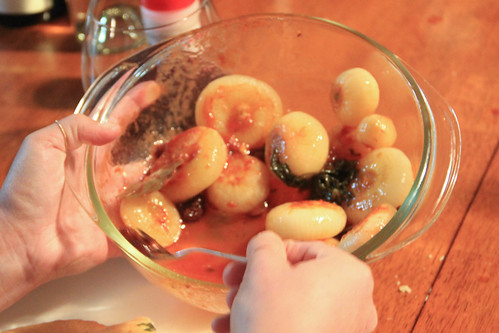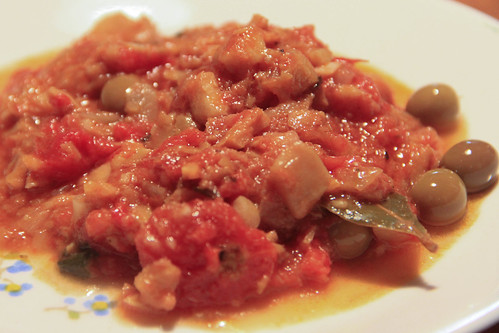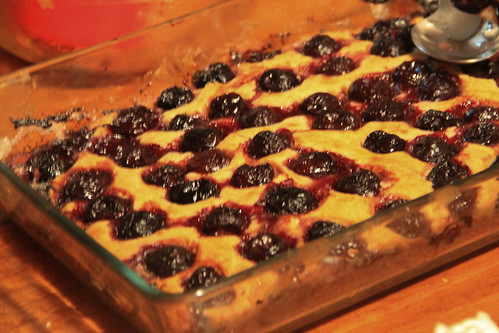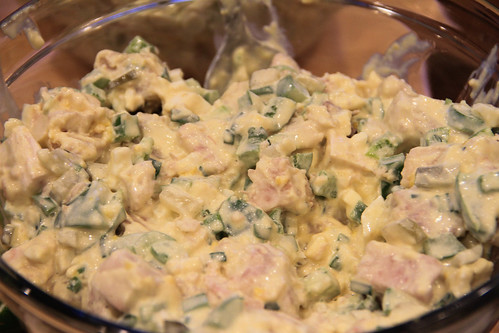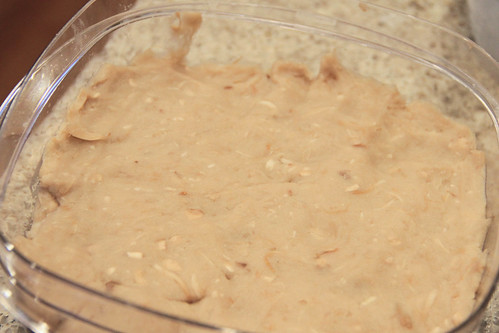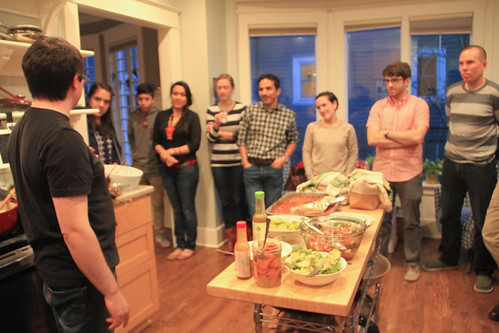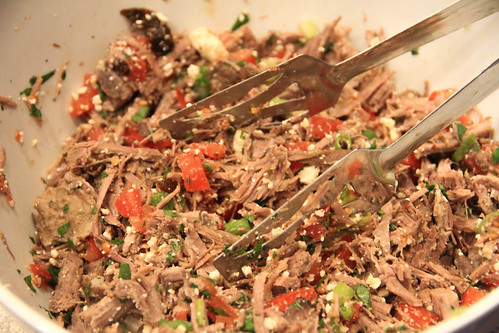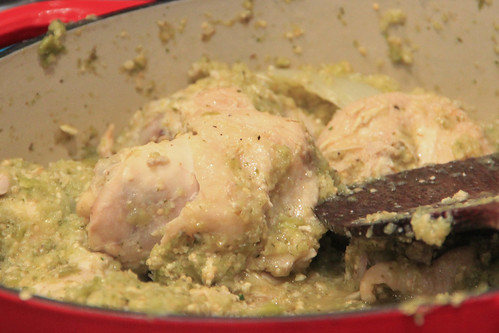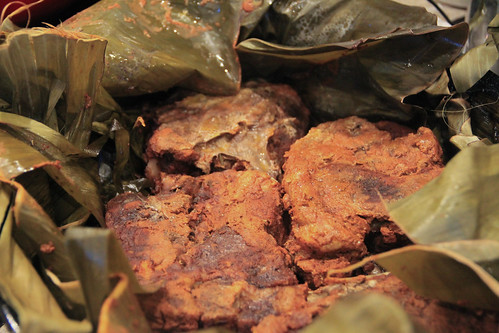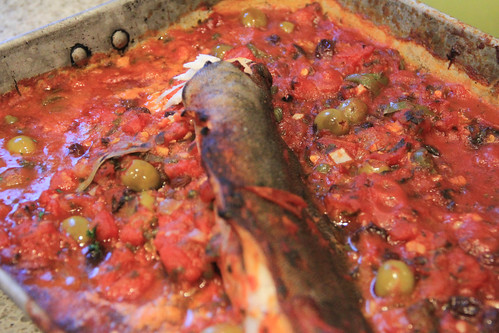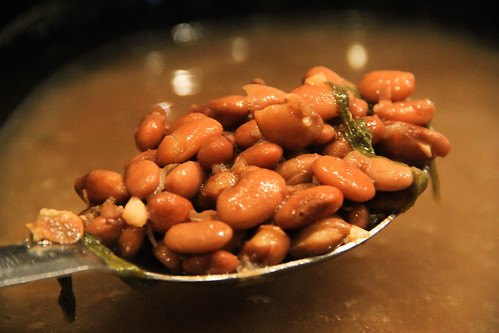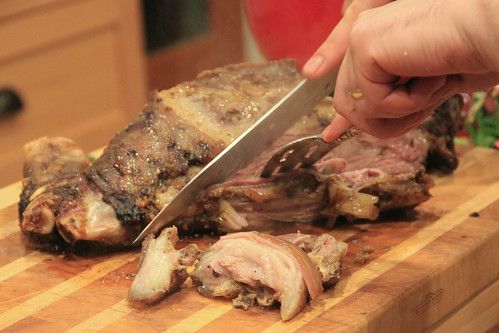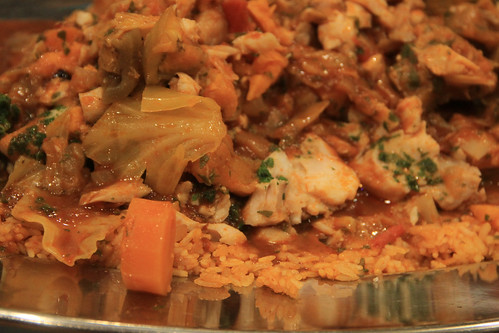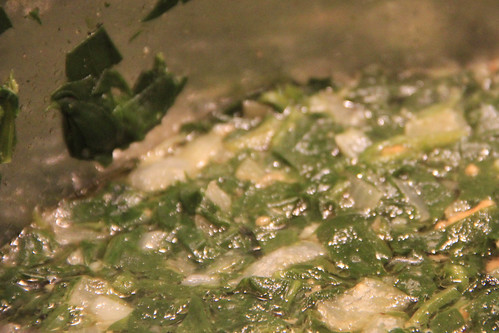To get one thing out of the way: Mongolian barbecue isn’t Mongolian. It was invented in Taiwan. So we didn’t make that.
Mongolia isn’t a good place for growing produce, so the cuisine barely has fruits or vegetables. For a bit of perspective, Mongolians following a traditional diet get their Vitamin C from organ meat, and at least one guidebook recommends that vegetarians bring whatever food they may need into the country. Instead, animals, especially sheep but also camels, yaks, cattle, horses and more, turn the grasslands into meat and milk, and grains and spices can be acquired through trade, and that’s the basis of the food of Mongolia.
While I was super excited about trying out a novel cooking technique (see below!), I didn’t have high hopes for how things would taste. Well, my low expectations were certainly exceeded!

Our guests included Kristen, Marcia, Jeffery, Jeremy and his parents visiting from France, Wayne, Robert, Anya, Laure, and Jonathan.
Airag | Fermented horse milk
The most distinctive component of Mongolian cuisine is a mildly alcoholic drink made of mare’s milk. The milk has to be fermented because in its pure state it has an indigestibly high amount of lactose. For months Wayne and I were keeping our eyes peeled for some raw milk to ferment, and even came close to finding sources on a few occasions, but then our mutual friend Deena reminded us that we ran an unquantifiable but certainly real risk of things going wrong and turning into poison. So we held off, and instead had the closest thing you can find in a supermarket: kefir.
Suutei tsai | Millet tea | Description
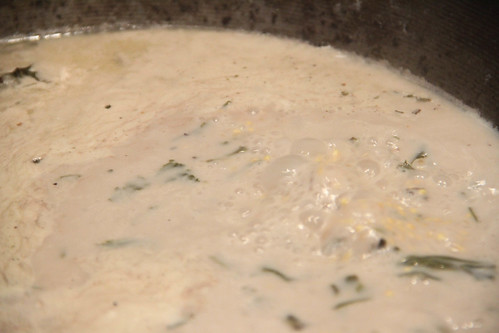
It’s kinda like a bizarro bubble tea, but with little millet grains taking the place of tapioca, green tea leaves just floating around as a hazard to avoid swallowing, and also a pinch of salt to make this a definitely savory concoction. Despite the challenge of filtering the leaves through teeth, it was surprisingly nice beverage-ish thing, and definitely comforting.
Horhog | Stone-boiled lamb stew | Recipe
https://www.instagram.com/p/BEkETT0NEBK/
Oh man, was this ever fun. I’ve read about various cultures around the world using fire-heated stones to boil water, and now I’ve done it!
The first step was to collect the river stones to be heated, which I did down near the mouth of the Sandy River. (Apparently this wasn’t the smartest thing to do, because volcanic rocks like these have air pockets that can lead to explosions. Thankfully that didn’t happen.) Then I got a roaring fire going in my barbecue, and let the rocks heat up for a whole hour until they got coated in ash and were nearly glowing. In the meantime I got a whole bunch of water boiling, since I had no idea if the rocks would provide enough heat to fully cook through many pounds of thick cuts of bone-on lamb.
Then the fun began, alternating meat and rocks in the pot. The water boiled violently and steamed abundantly with every rock I added, and as the amount of meat in the pot increased, so did the foam that erupted. I tossed a modest number of vegetables and seasonings on top, leaving the big ol’ pot sitting on the porch, and an hour and a half later everything was still very hot, and the meat cooked through and even a bit tender. Success!
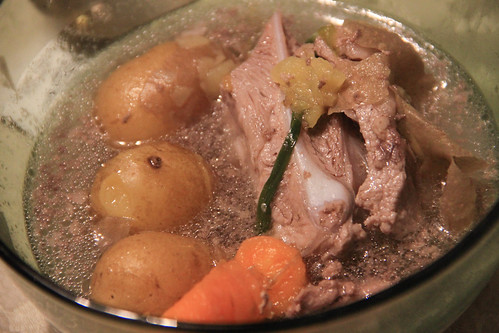
Following the recipe, every guest held a rock in their hands to receive the warmth (and to get a good moisturizing from the residual lamb fat!). And then we tucked into the stew, which was really quite tasty. Did the rocks contribute any of the flavor? I’m not sure, but they sure made the dish memorable and fun.
Buuz | Dumplings | Recipe

Compared to the stew, the dumplings were fairly straightforward, but nonetheless delicious. While I could have used ground beef, I decided to follow the suggestion to chop it finely, which took a lot of time but afforded a much nicer texture. While the ingredients were again simple, this was another surprisingly tasty dish. Perhaps this was thanks to the high-quality lamb I bought!
A huge thanks to Kristen, who came early to roll out and stuff them!
Boortsog | Fried cookies | Recipe

This isn’t the first dessert I’ve had with animal fat — lard is a traditional component of pie crust, after all — but it’s certainly the first with lamb fat. I trimmed it from the meat from the other dishes, slowly rendered it in simmering water, and then used it as the medium for frying up lozenges of sweet dough. As an accompaniment we had jam and clotted cream, which went surprisingly well with the musty-sweet lamb-cookies. (I tried making a form of cheese, but I failed to get the milk to curd properly. Oh well.)


